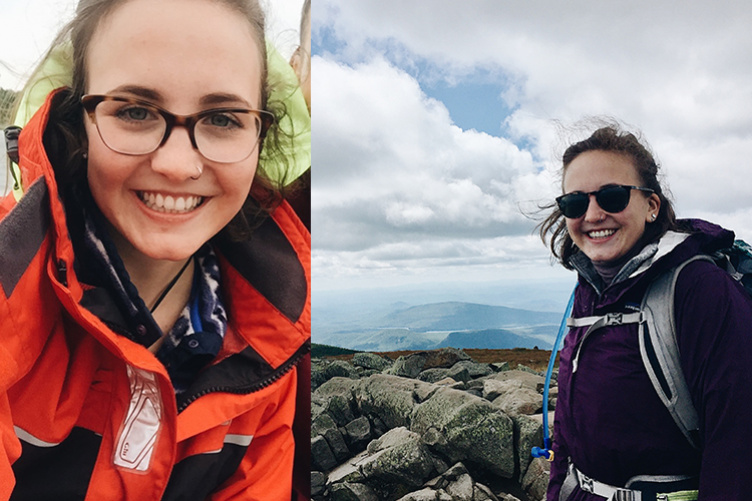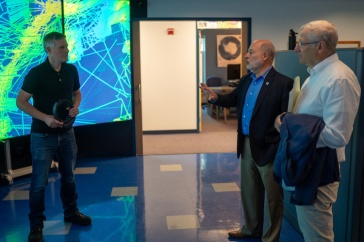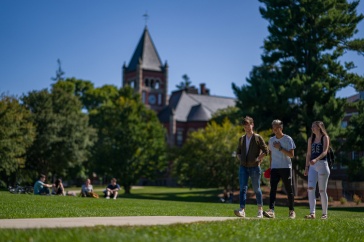
Right now, Ella Cedarholm '19 is somewhere off the coast of Lyttelton, New Zealand, on her way to Tahiti. Sounds exotic, right? Not in this case; this is a sailing voyage that isn’t about the destination, it’s about the journey and the research that takes place along the way.
Cedarholm is aboard the SSV Robert C. Seamans, a tall ship operated by the Sea Education Association (SEA), an undergraduate ocean education program based out of Woods Hole, Massachusetts. During the 40-day voyage that will cover 3,500 nautical miles, Cedarholm will share rotating watch shifts with her classmates, doing such things as being a look out, steering, cleaning, deploying scientific instruments, even cooking. Of the 24-hour shifts, she is most looking forward to the hours between 1 a.m. and 7 a.m.
“I was originally attracted to this program because I was able to get credit for my major but also because of the unique adventure and challenge that being on a 134-foot vessel crossing the Pacific Ocean with the same 34 people poses."
“Although being awake at this time seems undesirable at first, this is the watch I am most excited for because of the stars,” the Earth science major with a concentration in oceanography, says. “We will be using celestial navigation to gain fixes on our location throughout our route, and I can only imagine how amazing the stars will look with absolutely no source of light pollution.”
Along with a partner, Cedarholm will conduct research on the location where the strongest current in the world, the Antarctic Circumpolar Current, and the South Pacific Gyre, which transports warm subtropical waters, meet. They will look at how the location of the southern subtropical front has moved and whether changes are tied to climate.
Before setting sail on March 29, Cedarholm, of Lee, New Hampshire, spent the six weeks prior at the SEA campus in Woods Hole prepping for the voyage and developing her research proposal.
“I was originally attracted to this program because I was able to get credit for my major but also because of the unique adventure and challenge that being on a 134-foot vessel crossing the Pacific Ocean with the same 34 people poses,” says Cedarholm, who will contribute to the SSV Robert C. Seamans blog while at sea.
This summer, Cedarholm will further her oceanographic research at the Woods Hole Oceanographic Institution through their summer student fellowship program. There she will work with three scientists who are looking at the radionuclides that were released into the atmosphere or flowed into the ocean after an explosion at the Fukushima Daiichi Nuclear Power Plant in Tōhoku, Japan, in 2011 following an earthquake.
“Woods Hole Oceanographic Institution is one of the world’s largest private, nonprofit ocean research, engineering and education organizations. As an oceanography student it was a no-brainer that I apply, but with a 12 percent acceptance rate, I was careful not to get my hopes up that I'd be accepted,” Cedarholm says. “The student summer fellow program accepts 25-30 students every summer who do work in a broad range of disciplines within their departments. I will be working in the physical oceanography department doing work that directly connects to my interests as an oceanography major and applied mathematics minor.”
Follow Cedarholm’s voyage here.
Interested in marine sciences? Check out UNH’s School of Marine Science and Ocean Engineering.
-
Written By:
Jody Record ’95 | Communications and Public Affairs | jody.record@unh.edu



















































